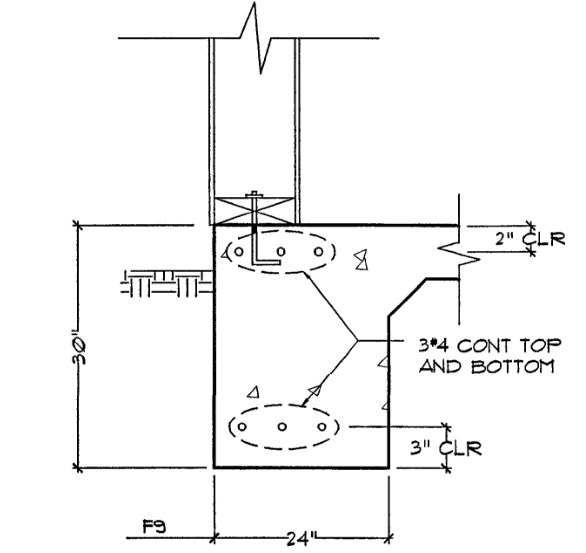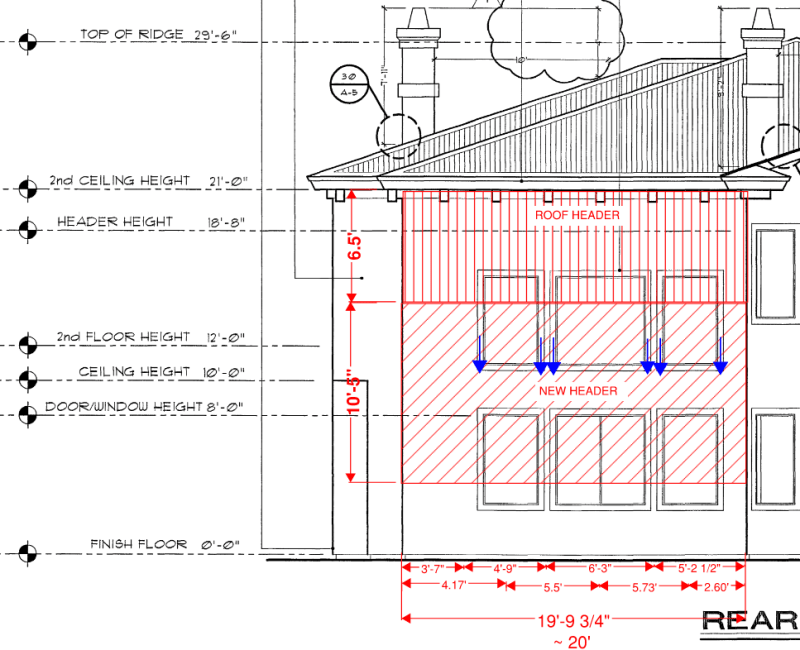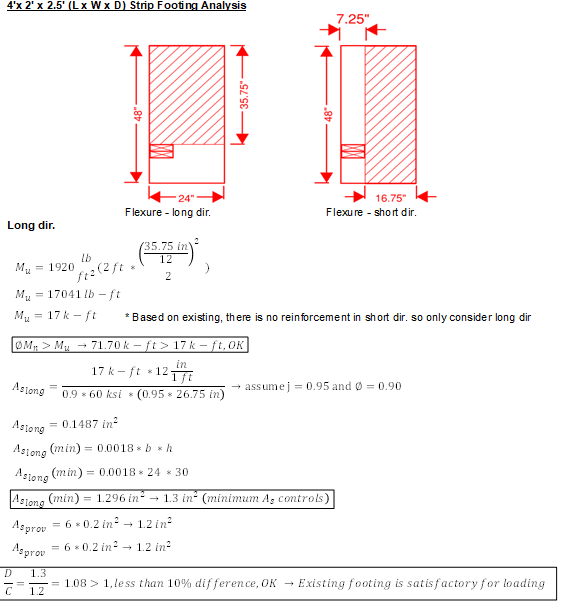Hey all,
I got a project where owner wants to incorporate sliding doors with a pocket wall. I'm having some doubts in assessing the existing foundation in Enercalc wherein:
1) For assessing existing strip foundations, would the axial loads from the trimmers/jacks to represent a localized point load onto a strip footing (similar to how column footings are designed)? Does the bottom plate play any part in distributing the point load into a larger surface area onto the foundation? I can imagine these strip footings are sized via stud wall as a "line-load" rather than a localized point load.
2) Is there a way to strengthen existing footing to take these new axial loads? I'd assume with 3 #4 bottom bars in the footing will need more flexural resistance. I imagine it would be a mess having to cut through existing reinforced foundation. UNLESS, these are mainly for T&S whereas the only concern for this would be moreso bearing.
3) Is the soil-bearing pressure taken as "uniform" distribution under the footing as opposed to a triangular distribution due to its eccentricity on-top of the footing itself? I imagine that the slab on grade tied into-it would counter-act this eccentricity.
4) Would out-of-plane wind load acting on king studs normally be taken care of via shear of anchor bolts/hold-downs (dashed circle)?
Thanks and appreciate any insight.



I got a project where owner wants to incorporate sliding doors with a pocket wall. I'm having some doubts in assessing the existing foundation in Enercalc wherein:
1) For assessing existing strip foundations, would the axial loads from the trimmers/jacks to represent a localized point load onto a strip footing (similar to how column footings are designed)? Does the bottom plate play any part in distributing the point load into a larger surface area onto the foundation? I can imagine these strip footings are sized via stud wall as a "line-load" rather than a localized point load.
2) Is there a way to strengthen existing footing to take these new axial loads? I'd assume with 3 #4 bottom bars in the footing will need more flexural resistance. I imagine it would be a mess having to cut through existing reinforced foundation. UNLESS, these are mainly for T&S whereas the only concern for this would be moreso bearing.
3) Is the soil-bearing pressure taken as "uniform" distribution under the footing as opposed to a triangular distribution due to its eccentricity on-top of the footing itself? I imagine that the slab on grade tied into-it would counter-act this eccentricity.
4) Would out-of-plane wind load acting on king studs normally be taken care of via shear of anchor bolts/hold-downs (dashed circle)?
Thanks and appreciate any insight.





